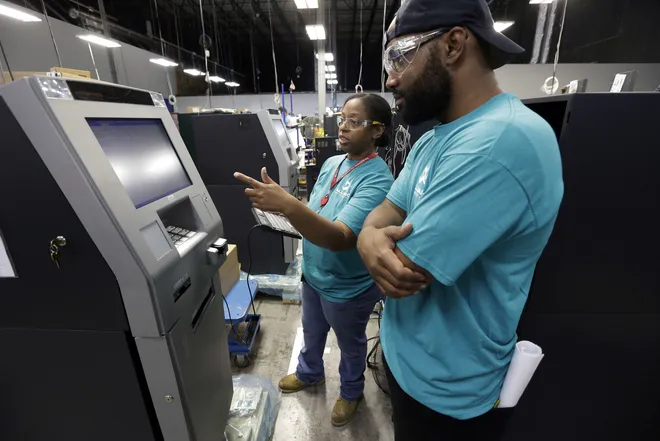Tokyo– Fujitsu Ltd. has announced plans to exit the automated teller machine (ATM) production business by 2030, as digital payment solutions continue to reduce demand for cash transactions, company officials confirmed on Saturday.
Shift Away from ATMs
Fujitsu, a leading Japanese electronics and technology firm, has been manufacturing ATMs since 1977. However, the company has already begun advising financial institutions to transition to alternative ATM providers. The decision to phase out ATM production aligns with a broader strategy to prioritize digital transformation and cutting-edge technology services, including artificial intelligence (AI).
Embracing Digital Transformation
As more consumers and businesses adopt digital payments, demand for traditional cash-handling solutions has declined. Japan, historically a cash-reliant economy, has seen a rapid rise in mobile payments, e-wallets, and contactless transactions. Financial institutions worldwide are adapting to this shift, leading to reduced investment in ATM networks.
According to a report by the Bank of Japan, cashless payments accounted for over 36% of consumer transactions in 2023, a number expected to rise further in the coming years. The trend mirrors global patterns, with countries like Sweden and China already making significant moves toward cashless societies.
Strategic Business Realignment
Fujitsu’s withdrawal from the ATM market is part of a broader restructuring plan to focus on high-growth sectors. The company is doubling down on AI-driven solutions, cloud computing, and digital transformation services, aligning with global technology trends.
In line with this strategy, Fujitsu has also announced plans to divest its shares in Shinko Electric Industries Co., a semiconductor packaging company, as well as battery manufacturer FDK Corp. and air conditioner maker Fujitsu General Ltd. These moves indicate a clear pivot toward software and service-oriented business models rather than hardware manufacturing.
Industry Response and Market Implications
Industry analysts believe Fujitsu’s exit from the ATM sector reflects a wider transformation in banking infrastructure. As financial institutions invest more in mobile banking apps and digital-only services, physical banking infrastructure—including ATMs and branch offices—is gradually being reduced.
Meanwhile, competitors in the ATM manufacturing industry, such as NCR Corp. and Diebold Nixdorf, may absorb the market share left by Fujitsu’s departure. Banks and financial institutions that rely on Fujitsu’s ATMs will need to make long-term adjustments to their service strategies.
Fujitsu’s decision to phase out ATM production underscores the accelerating shift toward digital banking. As consumers increasingly favor cashless transactions, the demand for traditional ATMs continues to decline. The company’s strategic focus on AI and digital services positions it for future growth in an evolving financial landscape.
For more updates on business and technology shifts, visit Issue N Fact.

